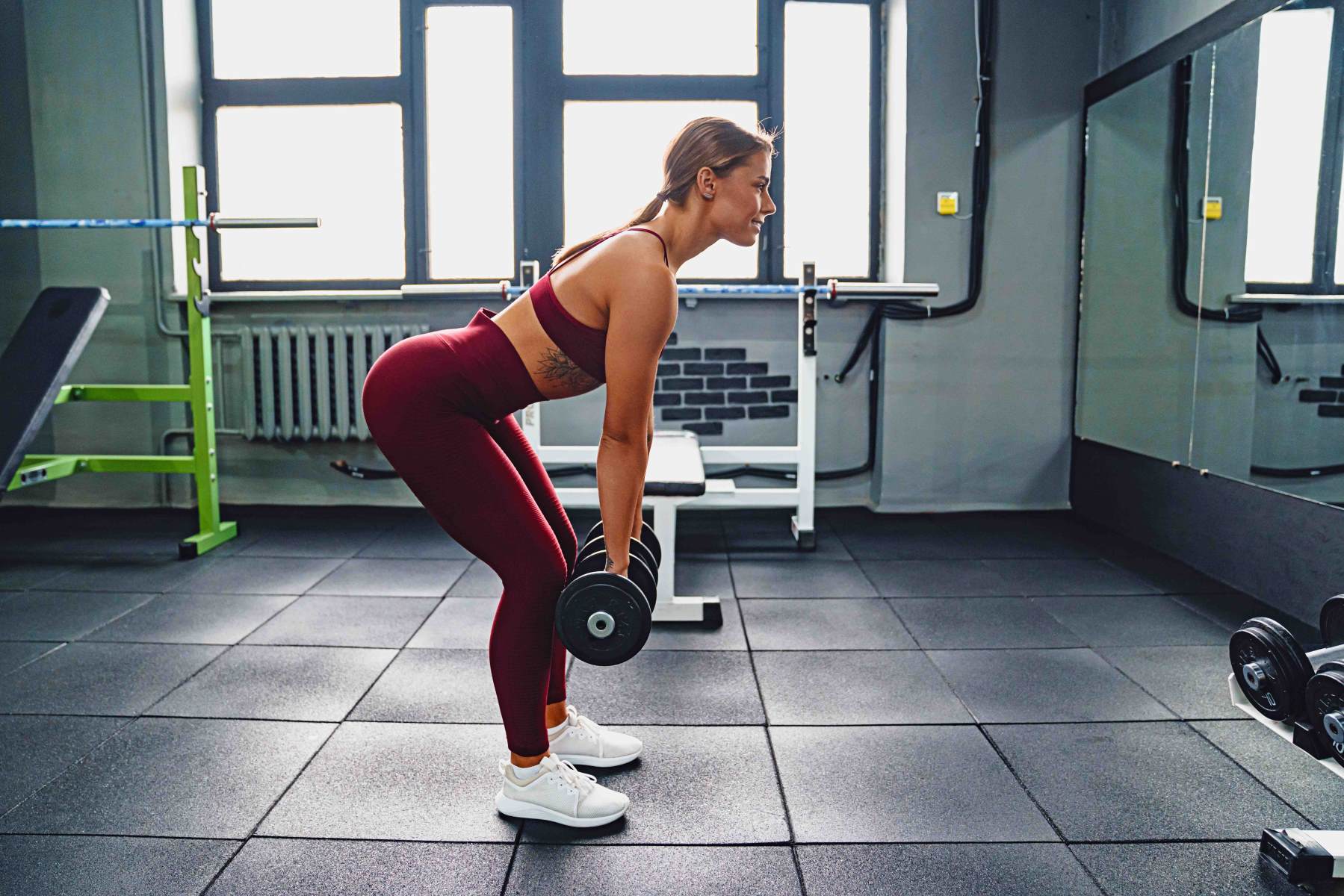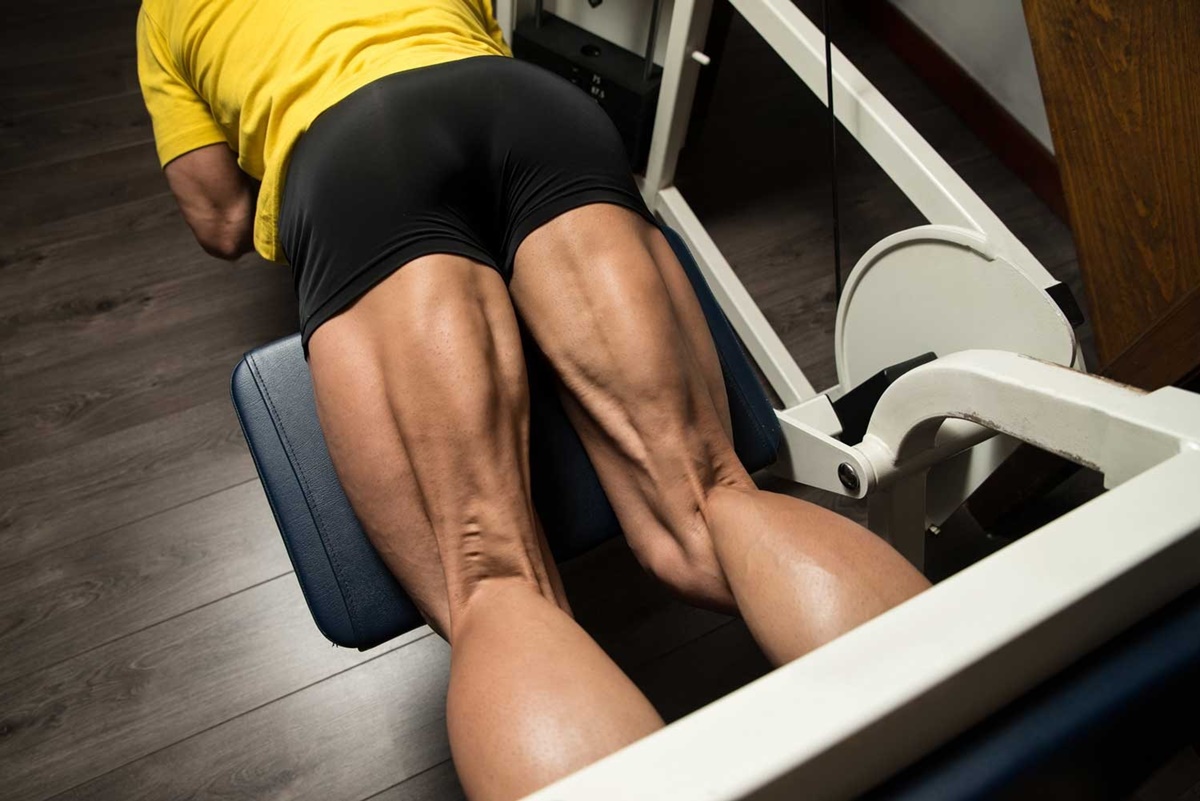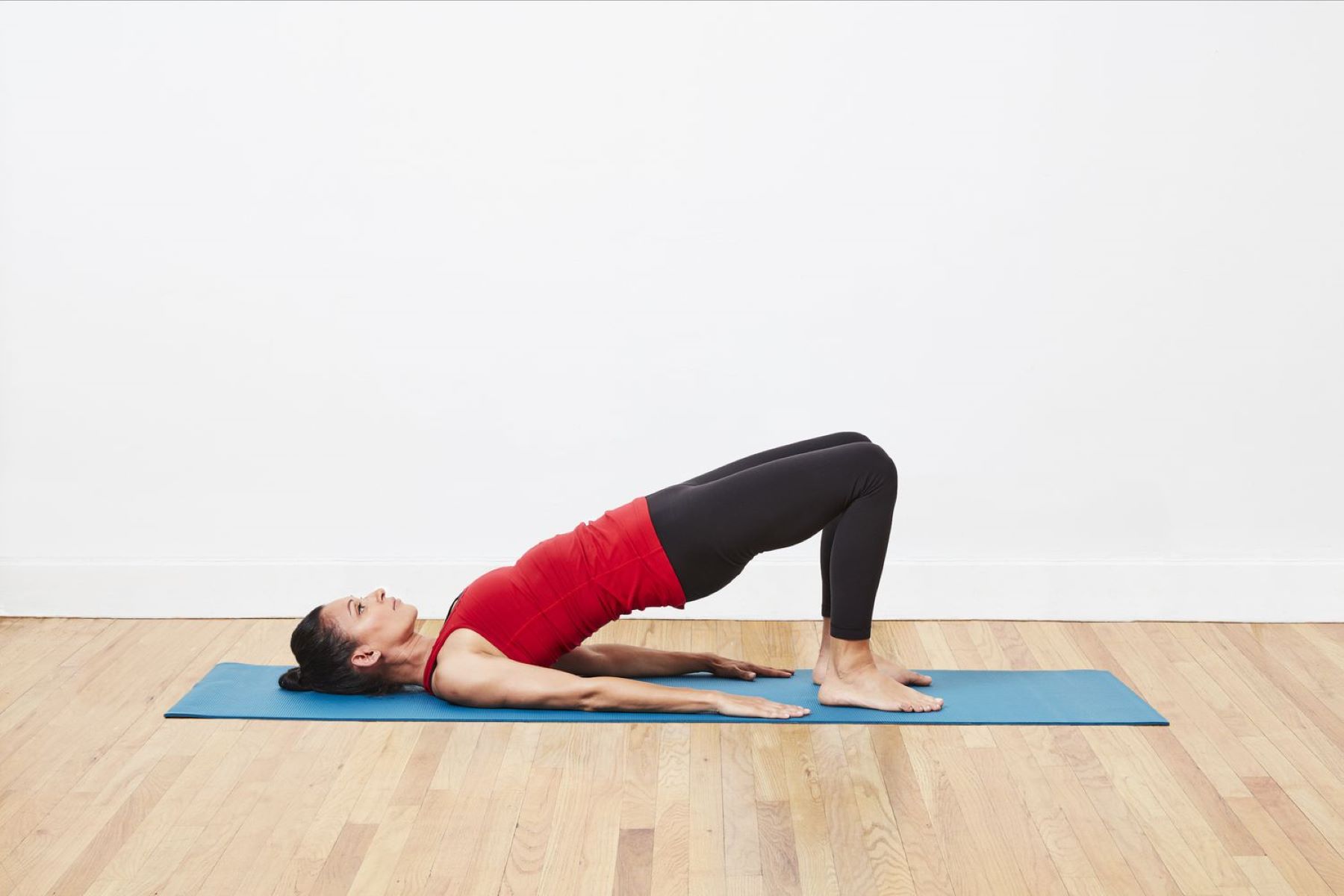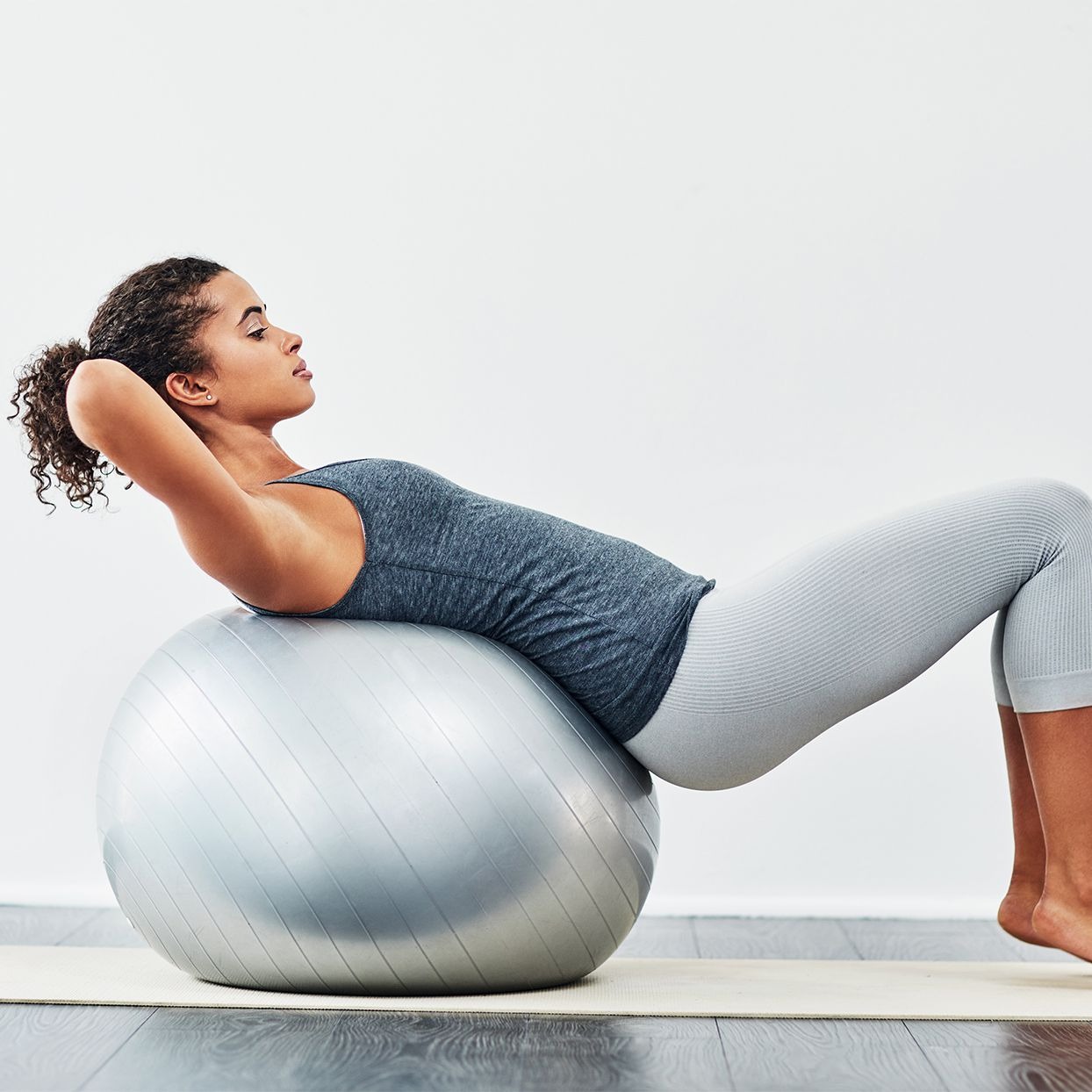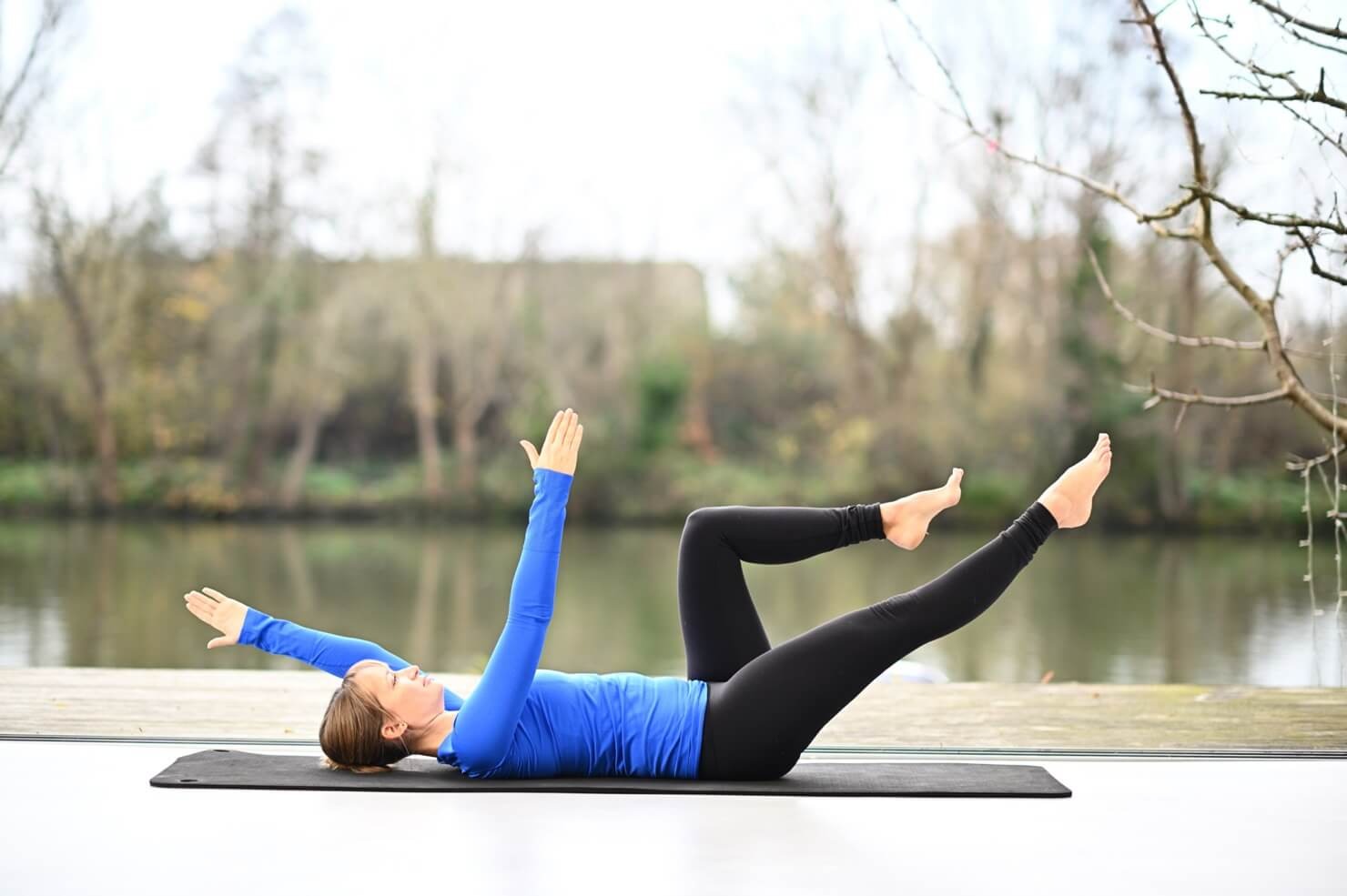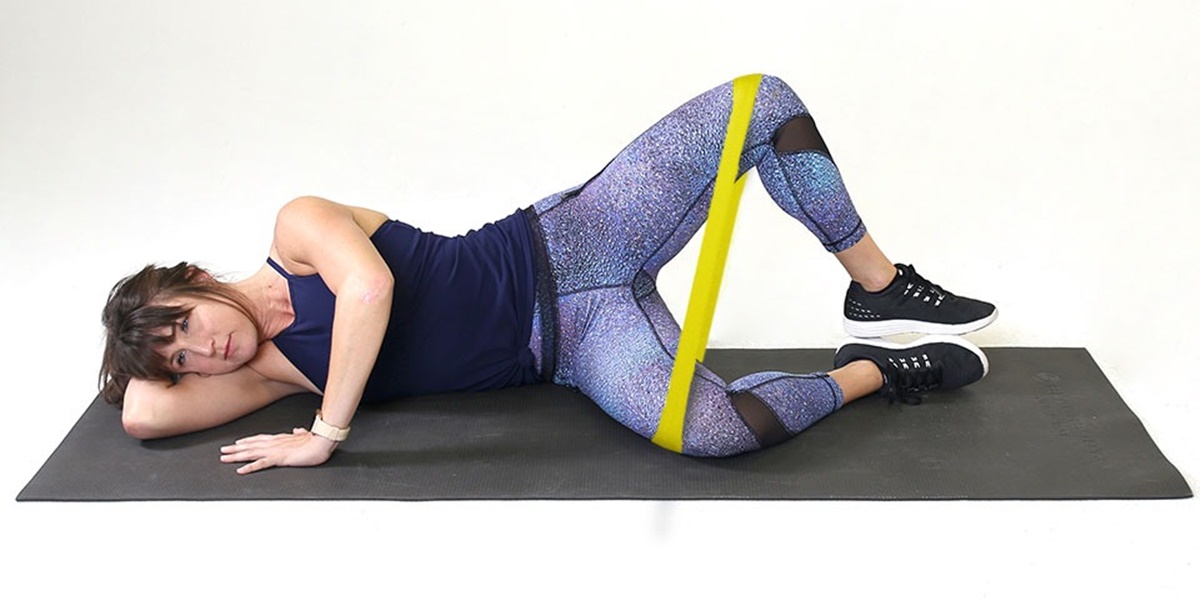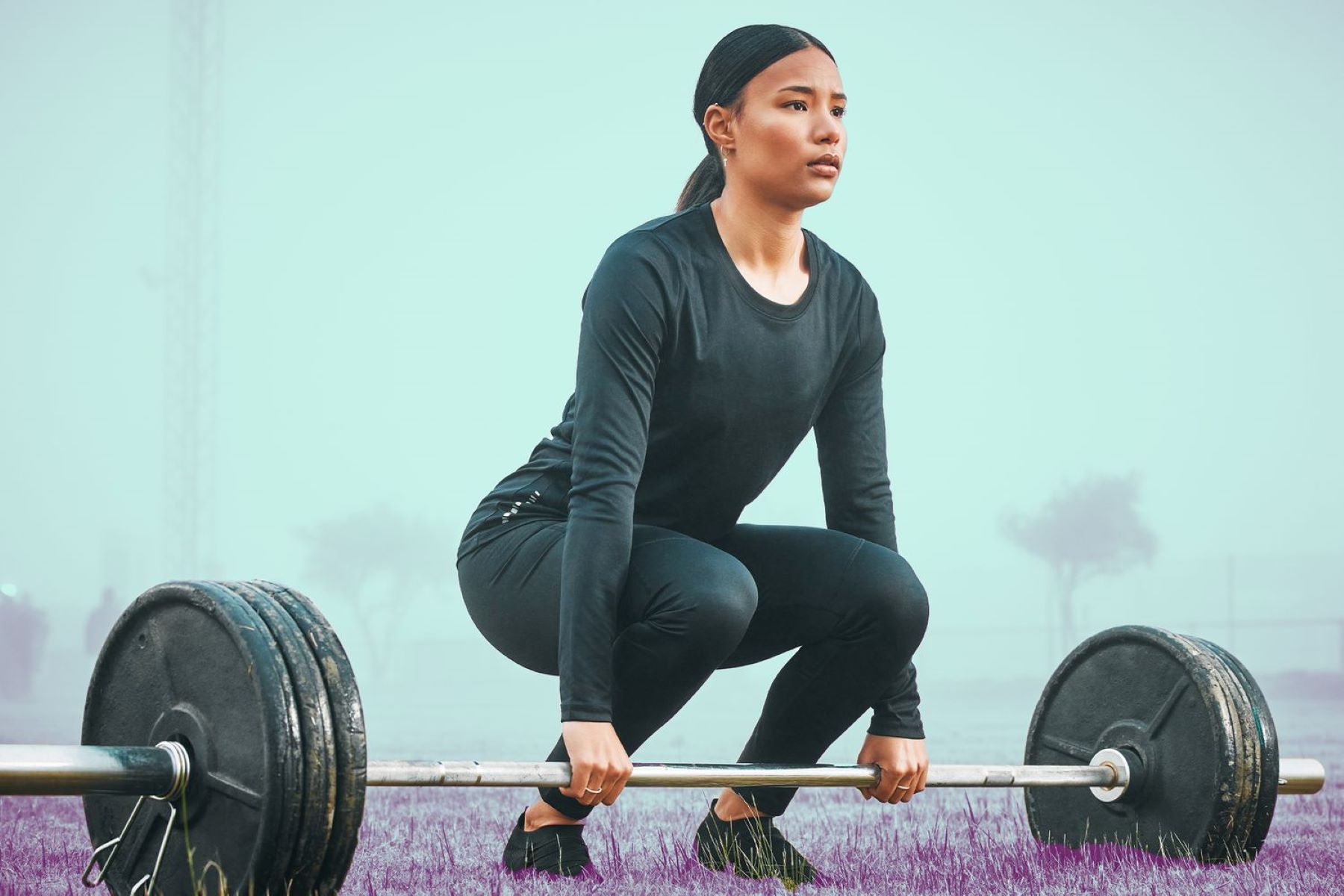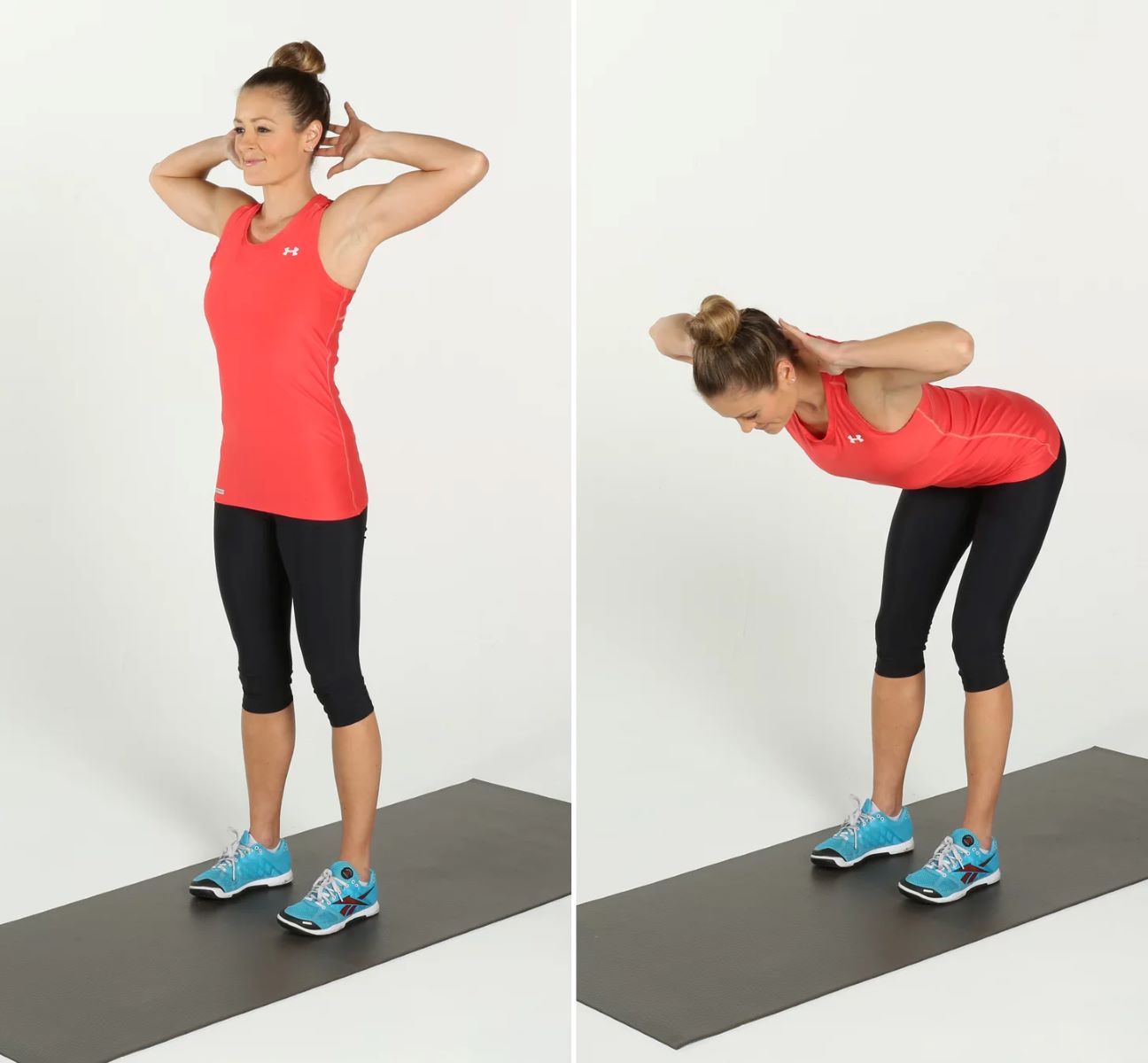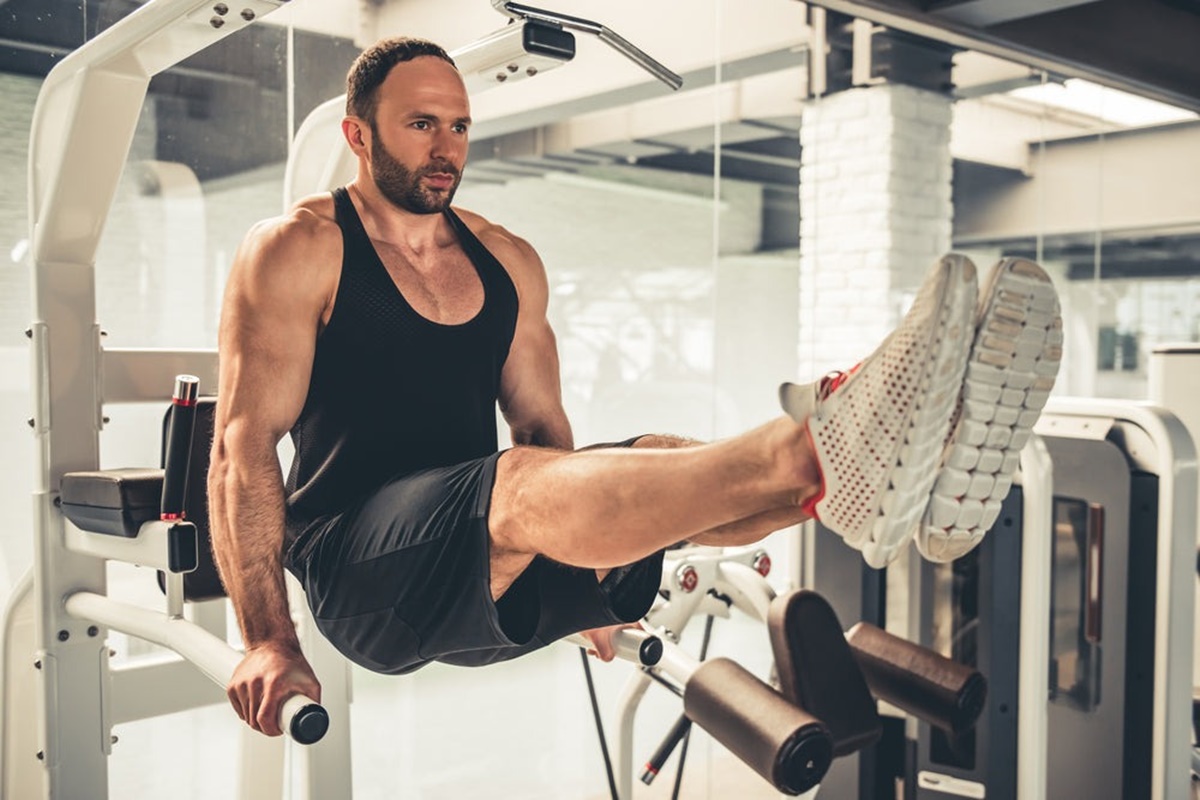

Featured
What Are Leg Lifts In Exercise
Published: September 30, 2023
Learn the benefits, variations, and proper form of leg lifts in exercise. Improve your strength and flexibility with featured leg lift exercises.
Introduction
Leg lifts are a popular exercise in the fitness community, known for their ability to tone and strengthen the lower body. Whether you’re a seasoned athlete or new to the gym, leg lifts can be a valuable addition to your workout routine.
Leg lifts primarily target the muscles in the legs, including the quadriceps, hamstrings, glutes, and calves. They can be performed in various ways, making them suitable for individuals of all fitness levels. In addition to building strength and muscle definition, leg lifts also offer several other benefits, such as improving balance, stability, and flexibility.
In this article, we will explore the different variations of leg lifts, discuss the specific muscles they target, and provide tips for safe and effective execution. We will also highlight the precautions and contraindications to consider before incorporating leg lifts into your fitness routine.
So, whether you’re looking to sculpt your lower body, enhance athletic performance, or simply increase your strength and flexibility, leg lifts might just be the exercise for you. Let’s delve into the details of leg lifts and discover how they can help you achieve your fitness goals.
Definition of Leg Lifts
Leg lifts are a type of exercise that involve lifting one or both legs off the ground, usually in a controlled and deliberate manner. The basic movement of leg lifts involves lying on your back and raising one or both legs upwards, either straight or with a slight bend at the knees. This exercise primarily engages the muscles in the lower body, including the quadriceps, hamstrings, glutes, and calves.
Leg lifts can be performed in different variations to target specific muscle groups and achieve different fitness goals. Common variations include straight leg raises, bent knee leg raises, side leg raises, and hanging leg raises. Each variation has its own unique benefits and challenges, providing a well-rounded workout for the lower body.
Leg lifts can be done with or without additional weights or resistance. While bodyweight leg lifts are effective for beginners or those focusing on muscle endurance, adding resistance can increase the intensity and promote muscle growth.
Leg lifts can be performed on the floor, using a mat or bench for comfort and support, or using specialized equipment such as a leg raise machine or parallel bars. The choice of equipment depends on individual preferences, fitness goals, and available resources.
Incorporating leg lifts into your workout routine offers a versatile and effective way to strengthen and tone your lower body. Whether you’re aiming to build muscle, increase flexibility, or improve overall athletic performance, leg lifts can be customized to suit your needs. The next sections will explore the specific benefits of leg lifts and the muscles they target, providing a comprehensive understanding of this popular exercise.
Benefits of Leg Lifts
Leg lifts offer a wide range of benefits for individuals of all fitness levels. Incorporating leg lifts into your workout routine can help you achieve your fitness goals and improve your overall physical well-being. Here are some of the key benefits of leg lifts:
- Strengthens the Lower Body: Leg lifts primarily target the muscles in the legs, including the quadriceps, hamstrings, glutes, and calves. Regularly performing leg lifts can help increase muscle strength and definition in these areas, improving your overall lower body strength.
- Tones and Shapes the Legs: Leg lifts are an effective way to tone and shape the legs. By targeting the major muscle groups in the lower body, leg lifts can help sculpt your legs, giving them a more defined and athletic appearance.
- Improves Balance and Stability: Leg lifts require core stability and proper body alignment, which improves your balance and stability. Strengthening the muscles in your legs and core can help improve your overall balance and coordination, reducing the risk of falls and injuries.
- Enhances Flexibility: Leg lifts involve stretching the muscles in the legs, which can help improve flexibility over time. Regular practice of leg lifts can improve your range of motion, making your movements more fluid and comfortable.
- Increases Endurance: Performing leg lifts for higher repetitions or adding resistance can improve your muscle endurance. This can be beneficial for athletes participating in sports that require prolonged lower body strength, such as running, cycling, or dancing.
- Aids Weight Loss: Leg lifts are a compound exercise that engages multiple muscle groups simultaneously. This can help burn calories and promote weight loss by increasing your overall energy expenditure during and after your workout.
- Boosts Athletic Performance: Strong and well-developed leg muscles are essential for many athletic activities. By incorporating leg lifts into your training routine, you can enhance your athletic performance in sports such as running, jumping, and agility-based activities.
These are just a few of the many benefits that leg lifts can provide. Whether you’re aiming to build strength, tone your legs, enhance balance, or improve overall fitness, including leg lifts in your workouts can help you reach your goals.
Muscles Targeted by Leg Lifts
Leg lifts are an excellent exercise for targeting and strengthening the muscles in the lower body. By performing leg lifts, you can effectively engage and work several muscle groups. Here are the primary muscles targeted by leg lifts:
- Quadriceps: The quadriceps muscles, located on the front of the thigh, are heavily engaged during leg lifts. They play a key role in extending the knee and lifting the leg.
- Hamstrings: The hamstrings, located on the back of the thigh, act as antagonists to the quadriceps. They are responsible for flexing the knee and assist in the lifting movement during leg lifts.
- Gluteus Maximus: The largest muscle in the buttocks, the gluteus maximus, is activated during leg lifts to stabilize the hips and extend the leg backward.
- Gluteus Medius and Minimus: These smaller glute muscles are located on the sides of the hips. They help with hip abduction during side leg lifts, maintaining stability, and supporting proper alignment.
- Calves: The gastrocnemius and soleus muscles, located in the calf area, are engaged to stabilize the ankle joint during leg lifts.
- Hip Flexors: The muscles responsible for flexing the hip joint, including the iliopsoas and rectus femoris, are activated during leg lifts. These muscles are especially targeted when performing straight leg raises.
- Adductors: The inner thigh muscles, known as the adductors, are involved in exercises such as side leg raises and help bring the leg back to the starting position.
- Core Muscles: While leg lifts primarily target the lower body, they also engage the core muscles for stability and support. This includes the rectus abdominis, transverse abdominis, and obliques.
By incorporating leg lifts into your workout routine, you can effectively strengthen and tone these key muscle groups. This can lead to improved leg strength, stability, and overall lower body function. It’s important to perform leg lifts with proper form and technique to maximize the activation of these muscles.
How to Perform Leg Lifts Properly
Performing leg lifts with proper form is essential to ensure effectiveness and prevent injuries. Here is a step-by-step guide on how to perform leg lifts properly:
- Starting Position: Lie down on your back on a mat or the floor, with your legs extended downwards and your arms by your sides. Engage your core by gently drawing your belly button towards your spine.
- Straight Leg Raises: For straight leg raises, keep your legs extended with a slight bend at the knees. Slowly lift one leg off the ground, keeping it straight and without lifting your lower back off the floor. Continue lifting until your leg is at a 90-degree angle or as high as you comfortably can. Hold the position briefly, then lower your leg back down with control. Repeat on the other leg.
- Bent Knee Leg Raises: If you prefer bent knee leg raises, start in the same position with your legs extended, but bend both knees so that your feet are flat on the floor. Lift one leg off the ground, keeping the knee bent at a 90-degree angle. Hold the position briefly, then lower your leg back down. Repeat on the other leg.
- Side Leg Raises: For side leg raises, position yourself on your side with your legs together and extended. Support your upper body with your forearm while placing your other hand on the floor in front of you for balance. Lift the top leg upwards, keeping it straight, until it reaches a comfortable height. Hold momentarily, then lower it back down. Repeat on the other side.
- Hanging Leg Raises: If you have access to a pull-up bar or a captain’s chair, hanging leg raises can be performed. Hang from the bar or position yourself on the chair with your legs slightly off the ground. Engage your core muscles, and lift your knees towards your chest, keeping your hips stable. Lower your legs back down with control.
Remember to control your movements throughout the exercise and avoid any jerking or swinging motions. Focus on engaging the targeted muscles and maintaining proper alignment. It’s important to start with a weight or resistance level that allows you to perform the exercise with good form and without straining or compromising your technique.
Start with a manageable number of repetitions and gradually increase as your strength and endurance improve. Always listen to your body and take breaks when needed. If you experience any pain or discomfort, consult with a fitness professional or healthcare provider.
By following these guidelines and performing leg lifts with proper form and control, you can maximize the benefits and minimize the risk of injury.
Common Variations of Leg Lifts
Leg lifts can be performed in various ways to target different muscle groups and add variety to your workout routine. Here are some common variations of leg lifts:
- Straight Leg Raises: This is the basic variation of leg lifts where you lift one or both legs off the ground while keeping them straight. It primarily targets the quadriceps, hip flexors, and core muscles.
- Bent Knee Leg Raises: In this variation, you lift one or both legs off the ground while keeping the knees bent at a 90-degree angle. It shifts the focus to the hamstrings and glutes, while still engaging the core muscles.
- Side Leg Raises: Side leg raises involve lifting one leg at a time out to the side while lying on your side. This targets the abductors (outer thigh muscles), hips, and glutes. It helps improve hip stability and balance.
- Hanging Leg Raises: Using a pull-up bar or a captain’s chair, hanging leg raises involve lifting both legs while hanging freely. It provides a challenging workout for the core, hip flexors, and lower abdominal muscles.
- Weighted Leg Lifts: To add resistance and increase the intensity of leg lifts, you can use ankle weights, resistance bands, or a weight machine. This variation enhances muscle strength and promotes muscle growth.
- Reverse Leg Raises: Also known as back leg lifts, this variation involves lifting one leg at a time backward while in a standing or kneeling position. It targets the glutes, hamstrings, and lower back muscles.
- Swiss Ball Leg Lifts: Utilizing a stability or Swiss ball, this variation adds an element of instability, forcing your core muscles to work harder to maintain balance. It engages multiple muscle groups in the lower body and core.
These are just a few examples of the many variations you can incorporate into your leg lift routine. It’s important to choose variations that align with your fitness goals, preferences, and fitness level. Remember to start with lighter resistance or bodyweight variations and gradually progress to more challenging variations as you gain strength and confidence.
By incorporating different leg lift variations, you can target specific muscle groups, prevent workout plateau, and keep your workouts interesting and engaging.
Tips for Safe and Effective Leg Lifts
When performing leg lifts, it is important to prioritize safety and effectiveness to achieve optimal results. Here are some essential tips to keep in mind:
- Maintain Proper Form: Focus on proper form and alignment throughout the exercise. Keep your core engaged, shoulders relaxed, and avoid any excessive swinging or jerking movements.
- Start with a Proper Warm-up: Warm-up your body with some light cardio exercises, such as jogging or jumping jacks, to increase blood flow to your muscles and prepare them for the leg lifts.
- Start Slow and Progress Gradually: Begin with a manageable number of repetitions and sets, and gradually increase the intensity and volume over time to prevent overexertion and injury.
- Breathe Properly: Remember to breathe evenly and consistently throughout the exercise. Inhale during the eccentric phase (lowering phase) and exhale during the concentric phase (lifting phase).
- Focus on Controlled Movements: Avoid using momentum or relying on gravity to lift your legs. Instead, focus on controlled movements, taking your time with both the lifting and lowering phases of each repetition.
- Adjust Difficulty Level: If you find a particular variation too challenging or your form starts to suffer, modify the exercise or reduce the weight/resistance to maintain proper form and technique.
- Listen to Your Body: Pay attention to any discomfort or pain during leg lifts. If you experience sharp or persistent pain, stop the exercise and consult with a fitness professional or healthcare provider.
- Rest and Recover: Allow time for rest and recovery between leg lift sessions to prevent overtraining and promote muscle growth and adaptation.
- Incorporate Variety: To prevent workout plateau and keep your muscles challenged and stimulated, incorporate different variations of leg lifts into your routine.
- Pair with Balanced Nutrition: Proper nutrition, including adequate protein intake, is important for muscle recovery and growth. Fuel your body with a balanced diet to support your fitness goals.
By following these tips, you can perform leg lifts safely and effectively, reducing the risk of injury and maximizing the benefits for your lower body strength, flexibility, and muscle tone.
Precautions and Contraindications for Leg Lifts
While leg lifts can be a beneficial exercise for many individuals, it is important to be aware of certain precautions and contraindications to ensure your safety and well-being. Here are some factors to consider:
- Pre-existing Injuries or Conditions: If you have any pre-existing injuries or conditions, such as knee, hip, or back problems, it is essential to consult with a healthcare professional or a qualified fitness instructor before attempting leg lifts. They can provide guidance on modifications or alternative exercises that are safe for your specific situation.
- Joint or Muscle Pain: If you experience joint or muscle pain during leg lifts, especially in the knees, hips, or lower back, it is vital to identify the cause of the pain. Stop the exercise and seek advice from a healthcare professional to prevent further injury or aggravating an existing condition.
- Pregnancy: If you are pregnant, it is highly recommended to consult with your healthcare provider before engaging in leg lifts or any strenuous exercise. They can provide guidance based on your individual circumstances and ensure the safety of both you and your baby.
- Proper Core Strength: Leg lifts require a good level of core strength and stability. If you have a weak core, it is advisable to work on strengthening those muscles first before attempting leg lifts, as a weak core can lead to improper form and compensation in other muscle groups.
- Correct Weight and Resistance: Use an appropriate weight or resistance level that allows you to maintain proper form and technique throughout the exercise. Avoid using excessive weight that may compromise your form or put unnecessary strain on your joints.
- Balance and Stability: Leg lifts can involve balancing on one leg or using unstable surfaces, such as a stability ball. If you have balance or stability issues, consider starting with more stability-oriented exercises and gradually progress to more challenging variations.
- Overtraining: Like any exercise, overtraining can lead to muscle fatigue, decreased performance, and increased risk of injury. Allow your muscles to rest and recover adequately between leg lift sessions to prevent overuse and give your body time to repair and strengthen.
It is crucial to listen to your body and be mindful of any discomfort or pain during leg lifts. If you experience any unusual or severe symptoms, stop the exercise and consult with a healthcare professional for appropriate guidance.
By taking the necessary precautions and paying attention to your body’s signals, you can minimize the risk of injury and enjoy the benefits of leg lifts in a safe and effective manner.
Incorporating Leg Lifts into a Fitness Routine
Leg lifts can be a valuable addition to your fitness routine, helping you strengthen and tone your lower body. Here are some tips for incorporating leg lifts into your workout regimen:
- Identify Your Fitness Goals: Determine what you want to achieve with your leg lifts. Whether it’s building muscle, improving stability, or enhancing athletic performance, understanding your goals will help you plan your workouts effectively.
- Select the Appropriate Variation: Choose leg lift variations that align with your goals and fitness level. Start with basic variations and progress to more challenging ones as you gain strength and confidence.
- Determine Frequency and Volume: Decide how often you will incorporate leg lifts into your routine. Aim for at least two to three sessions per week, allowing for adequate rest and recovery between workouts.
- Combine with Other Exercises: Include leg lifts as part of a well-rounded lower body workout. Pair them with exercises like squats, lunges, and calf raises to target different muscle groups and create a balanced routine.
- Vary Repetitions and Sets: Adjust the number of repetitions and sets based on your fitness level and goals. You can perform higher repetitions with bodyweight variations for endurance, or lower repetitions with added weight for strength and muscle growth.
- Progressively Overload: Continually challenge yourself by gradually increasing the intensity or difficulty of your leg lifts. This can be done by adding weight, increasing repetitions, or trying advanced variations as your strength improves.
- Include Warm-up and Cool-down: Prioritize a proper warm-up before leg lifts to prepare your muscles and joints for the workout. Stretch and cool down afterward to promote flexibility and aid in muscle recovery.
- Listen to Your Body: Pay attention to how your body responds to the leg lifts. Adjust the intensity or take rest days as needed to prevent overtraining and minimize the risk of injury.
- Track Progress: Keep a record of your leg lift workouts to track your progress over time. Monitor improvements in strength, endurance, and range of motion to stay motivated and accountable.
- Seek Professional Guidance: If you are new to leg lifts or have specific fitness concerns, consider working with a certified personal trainer or fitness professional to ensure proper form, technique, and individualized guidance.
Incorporating leg lifts into your fitness routine can provide numerous benefits to your lower body strength, muscle tone, and overall fitness. With consistency, patience, and proper planning, you can reap the rewards of these exercises and achieve your desired fitness goals.
Conclusion
Leg lifts are a versatile and effective exercise for strengthening and toning the lower body. They target various muscle groups, including the quadriceps, hamstrings, glutes, and calves, while also engaging the core muscles for stability and balance. By incorporating leg lifts into your fitness routine, you can improve strength, flexibility, and overall lower body function.
When performing leg lifts, it is crucial to prioritize safety and proper form. Start with a proper warm-up, listen to your body, and progress gradually to prevent injury and ensure steady progress. Additionally, consider any pre-existing injuries or conditions and consult with a healthcare professional or fitness instructor if necessary.
Remember to incorporate different variations of leg lifts to target specific muscle groups and add variety to your workouts. Adjust the weight and resistance level as needed to continually challenge yourself. Pair leg lifts with other lower body exercises to create a well-rounded routine and target different muscle groups.
Through consistent practice and dedication, leg lifts can contribute to improved strength, muscle tone, balance, and flexibility. By incorporating the tips and precautions mentioned in this article, you can safely and effectively incorporate leg lifts into your fitness routine and work towards achieving your fitness goals.
